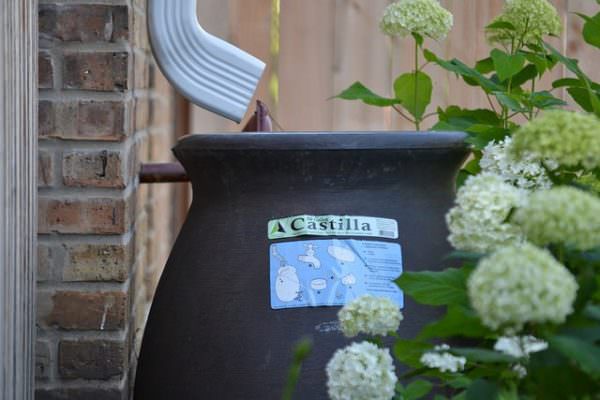
4 Tips for Watering Your Garden During a Drought
Many regions throughout the United States — and throughout the world — are experiencing drought. As climate change makes droughts more frequent and severe, it’s more important than ever to be careful to conserve water. But does that mean you have to give up your summer garden?
One of the best options is to choose plants that are native to your area as they will grow the best with minimal watering. But that doesn’t always offer a nice variety of options for your vegetable garden. If you want to grow your garden as planned, but drought makes conserving water essential, there are a few things you can do to help your garden thrive.
This article contains affiliate links. If you purchase an item through one of these links, we receive a small commission that helps fund our Recycling Directory.
Make (or Buy) Soaker Hoses
If water conservation restrictions aren’t preventing you from using city water in your garden, soaker hoses are the best way to go. They slowly drip moisture into dry soil, making sure that the water is getting into the soil and to your plants’ roots rather than running off where you don’t need it (and wasting water!).
There’s a wide range of types and lengths of soaker hoses on the market or you can make one pretty easily. If you have an old hose you’re not using, just poke small holes every six inches and attach a hose cap to the open end to block the water flow. This design will allow the water to drip out evenly. Be sure to not make the holes too large, and when the water is turned on, make sure the flow is slow enough to allow the water to drip out rather than spray out of the holes.
Collect Rainwater
Barrels are a great way to collect rainwater to use in your garden later. Keep a few rain barrels, clean garbage cans, or other large, clean barrels in your yard, especially at the ends of the gutters. If you live in an area where it’s common to have droughts in early summer, be sure to put those barrels out as soon as spring starts to begin collecting water.
This water won’t be very clean, especially if it’s being run through gutters, so don’t use it for drinking or cleaning, but it will work perfectly in your garden during a drought. However, you may not want to use the water for your vegetable garden. Captured rainwater could introduce contamination, for example, from animal droppings, so it may not be a good idea for watering plants that produce food.
The biggest problem with collecting rainwater for a drought is the lack of rainfall during a drought when your barrels are likely to be empty. If you save rainwater you collected early in the year to use during a drought months later, the likelihood of contaminants increases. So it’s best to use that water only on your ornamentals, not plants producing food you’ll eat.

Re-Purpose Wasted Kitchen Water
You may find that while making dinner or doing dishes, you let the water run for a period of time while waiting for it to get hot. Instead of letting the water run down the drain, collect the water for your thirsty plants. Using dish basins or buckets, you can collect this water and add it to your rain barrels outside. You can also use water that was used for boiling food as it won’t hurt the plants at all — just be sure to allow it to cool first. Another place water is likely being wasted is in the bathroom. Consider placing bins or buckets near your shower so you can collect water that would otherwise go down the drain.
Mulch the Soil
While mulching your soil isn’t a way to water your garden, it is a way to help the soil retain the water you feed it. Mulch will help the soil retain more water rather than allowing the sun to dry it out. You can use a variety of organic materials for mulching, including straw, newspaper, grass clippings, wood chips, and more. When done right, mulch can minimize weed growth and increase your yield too!
Feature image courtesy of Jessica Reeder. Originally published on June 6, 2015, this article was updated in August 2022.